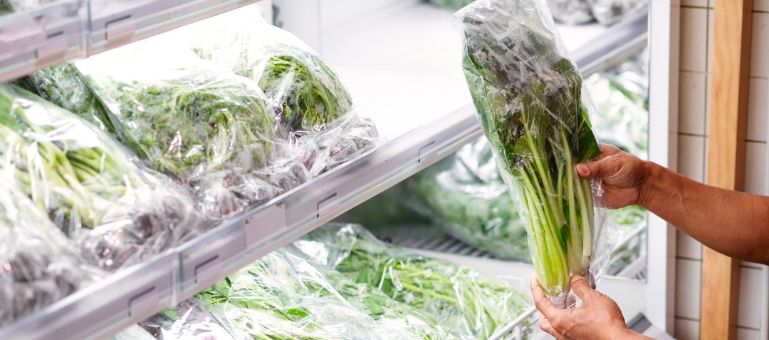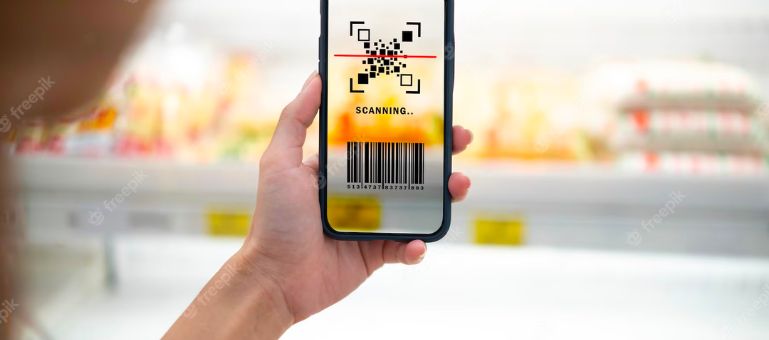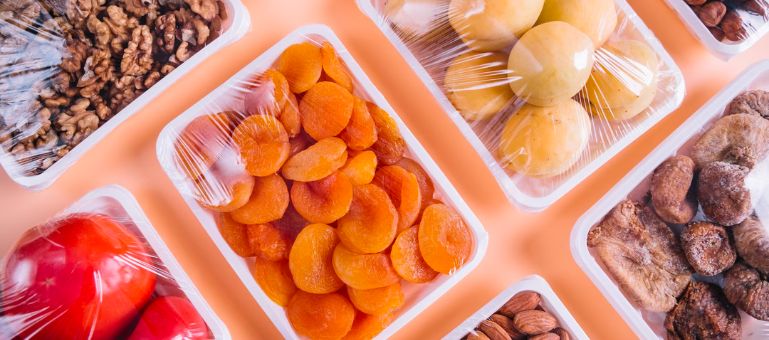Are you looking for food packaging technology that keeps the food fresh?
The science behind food packaging is complicated, but we will make it easy for you.
Food packaging industry trends are changing to keep up with consumer demands. Recently, consumers have been looking for brands that have invested in new food packaging technology.
Customers want food packaging innovation to ensure and preserve the quality and sustainability of the food they buy.
Besides the quality of the produce, packaging is a vital component that determines freshness in the food industry. Packaging is now a way of quality maintenance to keep the flavor, texture, and nutrients intact.
With a step toward sustainability, the consumer choice has shifted to buying food packaging that can be repurposed. At the same time, they want containers and packets that are convenient and easy to handle and reuse.
Is your brand offering food packaging that is convenient, sustainable, and maintains freshness?
If not, don’t worry!
In this article, we will explore the world of food packaging technology, understand its role in maintaining quality, and emerging trends in food packaging market.
Let’s look at ways to make your brand and packaging the face of sustainability in the food industry.
Defining Food Packaging Technology
The Art of Preservation
Food packaging technology is crucial in safeguarding products while ensuring they reach an individual’s tables fresh and safe to consume. But how can you determine that the packaging ensures a longer food preservation?
Let’s break it down into components to help you understand better.
The foundation of food packaging technology is built on the preservation of edibles. The essential requirement is using advanced materials, techniques, and processes.
With this, you can shield the food items from contamination, spoilage, and external influences that might compromise their quality.
All packaging and food companies want to deliver fresh and safe food to customers. This means the packaging should keep the food from getting bad or producing toxins.
Industry is looking to reduce the chemical interaction between the packaging material and food to prolong the shelf-life of packaged foods.
Effective packaging technology acts as a barrier between the food and its environment. This prevents harmful microorganisms, chemicals, and foreign substances from destroying the edibles.
Sealing off the packaging ensures the food is safe from external elements such as UV light and carbon dioxide.
Food packaging technology has been revamped to mitigate spoiled food in pantries or refrigerators. It is now done to extend the shelf life of products, slowing down the deterioration process.
Multiple factors affect the quality of food and the packaging. This includes moisture, oxygen, and light exposure, which can cause bacterial overgrowth.
For quality maintenance, you can invest in polymer-based packaging that allows minimal interaction with the outside atmosphere.
Packaging technology uses solutions that shield food items from physical damage and temperature changes. These factors could compromise taste, texture, and appearance.
Thus, investing in materials that maintain the quality of food products from production to consumption is vital.
Components of Food Packaging
The food in the container will contact the material for an extended period. This requires packaging companies to consider the material used and the packing method carefully.
Let’s begin by understanding the components of food packaging.
The FDA requires the materials to comply with the Current Good Manufacturing Practice (CGMP) regulations. Simply put, packaging should be the food’s first line of defense.
Packaging materials used have to be tested for safety and durability. Before investing in food packaging materials, make sure it has the following properties:
1. Barrier Properties
Barrier properties in packaging technology form an invisible shield against moisture, oxygen, and light. This helps your food maintain its flavors, textures, and nutritional goodness.
2. Sealing Mechanisms
The sealing mechanisms can vary from a zip-lock to an airtight seal. If the food is sealed correctly, it locks in the freshness and prevents any unwanted bacteria, air, or moisture from spoiling the food quality.
3. Temperature Resistance
The packaging should withstand temperature variations without compromising its structural integrity. This is particularly important for frozen items or hot foods.
4. Aroma and Flavor Preservation
The packaging should prevent the escape of aromas and flavors, preserving the sensory experience of the food.
5. Sustainability
Eco-friendly packaging ensures that the materials are recyclable, biodegradable, or made from renewable resources, contributing to sustainability.
6. Cost-Effectiveness
While ensuring all necessary properties, the packaging materials should also be economically viable to keep the production costs manageable.
Once you have prepared a package that checks all the boxes of safety and durability, you should provide crucial information about the ingredients used in preparing the food container.
You can write nutritional value, allergens, and expiry dates with labeling. This will speak of your brand’s transparency with the consumers and help you gain their trust.
Consumers want to know when their food packages will expire. This can be done using intelligent packaging features, including time-temperature indicators and freshness sensors. With this, customers will know the safe window of consuming food.
Some of the most used packaging materials in the food industry include glass, polymer plastics, paper and cardboard, and metals such as aluminum and tin.
Choose the material that works best with the food product you are packaging to maintain quality.
Enhancing Food Safety and Quality
Barrier Properties and Shelf Life Extension
As mentioned earlier, packaging materials are used with their effective barrier properties in mind. This is essential in creating and safeguarding against unwanted elements.
The barrier prevents oxygen, moisture, light, UV light, and contaminants from infiltrating the package and affecting the food. As a result, products remain fresher, safer, and more appealing to consumers.
Packaging techniques, such as modified atmospheric packaging, keep the stored food safe from oxygen. If similar techniques are not adopted, it can oxidize the food contents and harm the customers.
Similarly, if the packaging material absorbs moisture, the food will no longer be fresh and crisp. Moisture on food allows rapid overgrowth of mold and spoils it faster.
Solid food packaging is, therefore, essential for shelf life extension. This is a critical factor that keeps the food industry running. Proper packaging can prolong the time a product remains fresh and safe for consumption.
Nutritional preservation is another aspect that concerns food packaging technology. Exposure to oxygen and light destroys and degrades the food’s essential vitamins, minerals, and other nutrients.
Packaging preserves the nutritional value of the food for the consumers to receive the maximum benefits.
Lastly, the packaging is a barrier to prevent contaminants from entering the packaged food. This is especially important when dealing with perishable items susceptible to bacterial contamination.
As the food industry continues to evolve, innovative packaging solutions are necessary to ensure the safety of the products.
Temperature Control and Preservation

How can you ensure that perishable food items maintain freshness during transportation and storage?
It is essential to understand that each food item requires well-regulated temperature packaging.
Here are some of the commonly used techniques used for temperature regulation.
1. Insulation Techniques:
Insulation methods are commonly used to create a barrier between the external environment and the product. This barrier helps maintain a stable temperature, ensuring your food remains as fresh as when packed.
2. Vacuum sealing practices:
This method involves removing the air from the package. Without the presence of oxygen, it prevents the growth of harmful microorganisms. This keeps your food fresh and reduces the need for artificial preservatives.
Food products are most prone to bacteria and mold if left in hot and humid environments. This is where temperature control plays a crucial role in slowing down their growth.
Packaging keeps perishables consistently cold and reduces the risk of bacteria multiplying rapidly. This translates to safer, longer-lasting food for consumers.
The same applies to when packaged food has to be transported. For this, food items are transported via temperature-regulated trucks, which offer a refrigerated environment that the food items need.
Temperature control is a game-changer for freshness maintenance. It is about preserving quality, enhancing safety, and delivering a better consumer experience.
Current Trends in Food Packaging
Sustainable Packaging Solutions
With the growing consumer awareness about sustainable packaging, the sustainable packaging industry is projected to grow from USD 371.4 billion in 2022 to USD 737.6 billion by 2030.
The compound annual growth rate (CAGR) of 10.30% during the forecast period is mainly due to strict bans and rising environmental concerns caused by packaging waste.
This requires the food and packaging industry to avoid traditional packaging materials like plastics. Material such as single plastics take centuries to break down, causing lasting harm to our planet.
Excessive waste from traditional packaging has been a global concern. Innovations in sustainable packaging technology tackles this issue. Sustainable packaging solutions generate minimal trash in landfills and oceans, creating a safer environment.
The packaging industry is recommended to use eco-friendly materials derived from plant-based plastics, which are compostable alternatives.
New materials, such as biobased plastics, maintain product quality while reducing the carbon footprint of packaging production.
Biodegradable packaging is the future of sustainability. These packages break down through natural processes into harmless components, such as water, carbon dioxide, and methane.
Since these essential elements leave no trace of waste, it is a remarkable step towards a cleaner and healthier planet.
A survey on sustainability reported that 73% of consumers were willing to change their consumption behavior to reduce the environmental impact.
Additionally, about 41% of consumers are highly willing to pay more for products that contain all-natural or organic ingredients.
As consumers become more aware of the environmental impact of packaging waste, they want to purchase products that align with their values, including packaging choices.
Sustainable packaging not only meets these demands but also enhances brand reputation. Brands that embrace eco-friendly packaging can connect with environmentally-conscious consumers and increase their market presence.
Smart Packaging and Interactive Labels

The rising trend of intelligent packaging technology is repurposing the consumer’s interactions with the products by providing more information.
The concept of innovation in packaging industry is broadly based on two forms: active packaging and intelligent packaging.
Active packaging adds and removes components into the packaged food or immediate surroundings. The aim is to improve the product’s shelf life or quality. Examples of these include absorbers to remove oxygen from the package.
Intelligent packaging has multiple functions that allow tracking of the product, sensing a property of the packaged food or the environment, and communicating it to the user.
By using nanoparticles, polymer nanocomposites, and nanosensors, you can detect the quality of the stored food based on its pH and fermentation.
Consumers can use the printed interactive labels and QR codes linked to sensors to learn more about the packaging material and food safety.
QR codes can be scanned by pointing the phone’s camera to it. This simple scan redirects customers to a description of the food journey from the farm to the store. It helps provide storage instructions and ideal storage tips.
Awareness about the food item’s origins customers instills loyalty towards your brand.
Innovative packaging also comes with freshness indicators. These sensors monitor the condition of the product inside the packaging. Based on the color changes or digital alerts, customers can know the state of the product.
Moreover, innovative packaging has become a valuable source for consumers with food allergies.
Consumers will instantly receive allergen alerts by scanning a product and signing up with a mobile number on the link. Interactive labels can highlight potential allergens to help customers make informed choices.
By investing in intelligent packaging technology, consumers can stay connected with the food processor’s journey and the end product. It comes with the added benefit of quality control checking.
Consumer Convenience and Experience
Portion Control and On-the-Go Packaging

Consumers prefer food in containers with portion control and on-the-go formats to match a fast-paced life.
If your brand wants to prioritize customer convenience, you should be producing food packages that are light and easy to carry. Busy schedules are compelling individuals to choose single serving sizes for readymade food.
This type of packaging and size is also a choice of consumers who are conscious about health. A single serving with measured calories and nutritional information allows them to monitor and self-regulate their diet carefully.
Single-serving also helps parents give children healthy meal varieties for school. Since individuals can consume the desired portion and save the rest in pouches, it is an intelligent alternative to waste reduction.
Here are some of the most common portion-control food items that consumers purchase:
- Single-serve snack packs are generally used for portion control for nuts and pretzels. These packs make snacking a guilt-free pleasure.
- Individual condiment portions such as ketchup, mayo, or salad dressings offer the correct quantity and add flavor to meals.
- On-the-go cups are portioned packs that contain cereal or rice and often come with a built-in compartment for gravy or milk.
Producers in the food industry want to offer bite-sized snacks and portion meals to help consumers adapt to a changing lifestyle seamlessly. Give your customers a convenient option for their daily lives.
Easy-Open and Resealable Features

Convenient packaging includes easy-open seals, resealable closures, pouches, lids, and stick packaging. Here are the top 4 ways in which these features are used:
- Easy-Open seals offer a hassle-free experience that allows individuals to have food by simply peeling the wrapper or tugging the lid off. Customers do not have to carry scissors or knives with them.
- Resealable containers keep food items and snacks fresh, crispy, and flavorful. Customers prefer the ease of zipping, pressing, or snapping to seal the box of leftover food.
- Pouches come in various sizes and materials, such as plastic or brown paper. Their flexibility and lightweight nature make them an on-the-go essential.
- With lids, ready-to-eat meals, especially those of liquid consistency, are kept spill-free and safe.
You can deliver fresh food to the buyers using easy-open and resealable containers and packages. Customers will no longer have to worry about spills or leaking food tins.
Help your customers balance their diet by offering portion management with resealable food packs. These containers can be washed to store items or pack home food.
Conclusion
Are you ready to make life more convenient for customers with the latest innovations in food packaging technology?
When transporting fresh produce to stores, it should be packaged in containers and pouches that do not allow the outside environment to reduce its freshness.
The materials that are used for food packaging should be biodegradable or derived from biobased plants. Polymer-based packaging prevents moisture and oxygen from oxidizing food items and keeps landfills empty.
Adopt the latest trends in food packaging, such as intelligent packaging features, modified atmosphere packaging, and making single-portion meals.
Remember that modern packaging brings convenience to busy lives and helps individuals adapt to an on-the-go lifestyle.





























